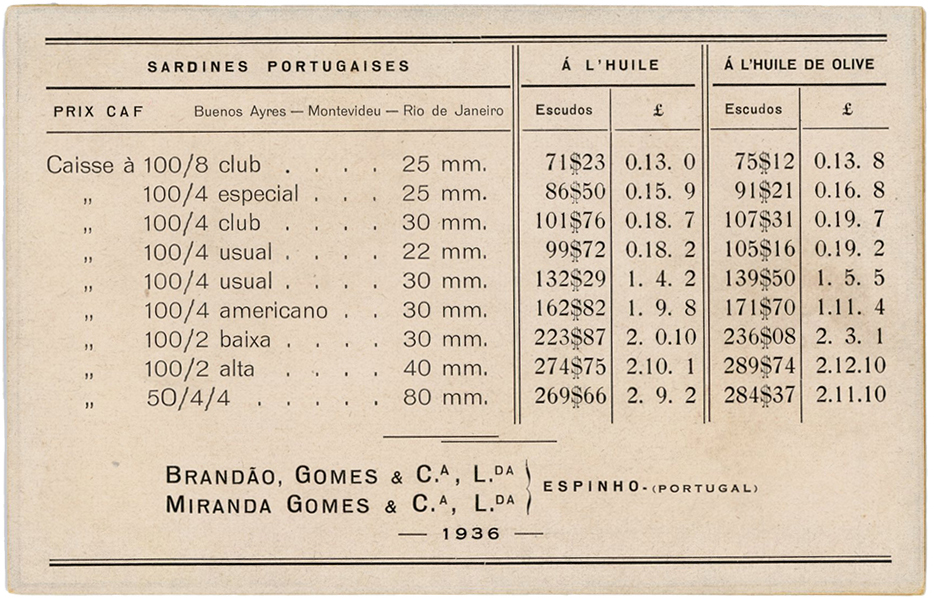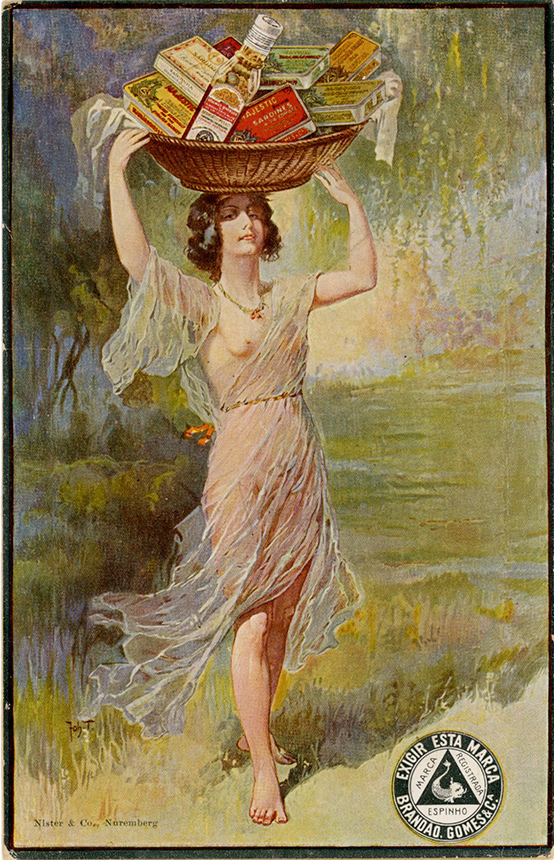Postal de 1936, impresso pela empresa de Ernest Nister de Nuremberga.
No verso tabela de preços de conservas
Printed By E. Nister At Nuremberg
Ernest Nister (1877-1916)
Ernest Nister (1842–1909), publisher born in Oberklingen, Germany, best known for high-quality color printing and movable books. Nister began his printing business in 1877 when he acquired a small lithographic workshop in Nuremberg, Germany. By 1888 he had opened offices and design studios in London, but all of the printing was done in Germany, taking advantage of their high-quality chromolithographic printing processes. The Nister catalog included a full range of publications: annuals, storybooks, toy books, poetry, and religious stories, as well as calendars, greeting cards, embossed pictures, and even games. George Manville Fenn, Charles Kingsley, and E. Nesbit were but some of the well-known authors whose work was published by Nister.
Nister produced more than five hundred mostly undated illustrated books for children, but from the 1890s the firm’s production was almost exclusively toy or movable books and Nister introduced many new mechanical techniques. Land of Long Ago (c.1890) included three-dimensional scenes that lifted into view with the pull of a linen tab. The revolving pictures, as seen in Magic Moments (c.1890), had two different pictures printed on intersecting, die-cut disks; with the pull of a tab one picture covered the second to show a completely new image. The cutting and construction of all of the movable books was done by hand and required considerable skill to align all of the separate pieces. The illustrations in Nister’s books—typically featuring affluent, well- dressed, cheerful children at play—were produced by many different artists. The artist’s name, however, was often either dropped or missing, while the signature of Nister, as lithographer, was usually found somewhere on the work—thus leading to confusion about attribution. Nister frequently reused illustrations, occasionally adding picture elements that were not in the original work.
Nister held both English and German patents for the revolving picture mechanism that first appeared in Twinkling Pictures (1899). The mechanism consisted of two disks that covered each other and were divided into six segments. Those segments in turn fit together in a star formation. When a tab in the frame was pulled, one disk slid over the other to reveal a kaleidoscopic picture. Nister publications ceased in 1916 but many of the publisher’s books had a second life in 20th-century reproductions. Some of the books published in the 1980s and 1990s were exact reproductions, some were issued with different titles, and some were compilations of Nister illustrations and were not true replicas of 19th-century movable books. [from Oxford Encyclopedia of Children’s Literature ]



